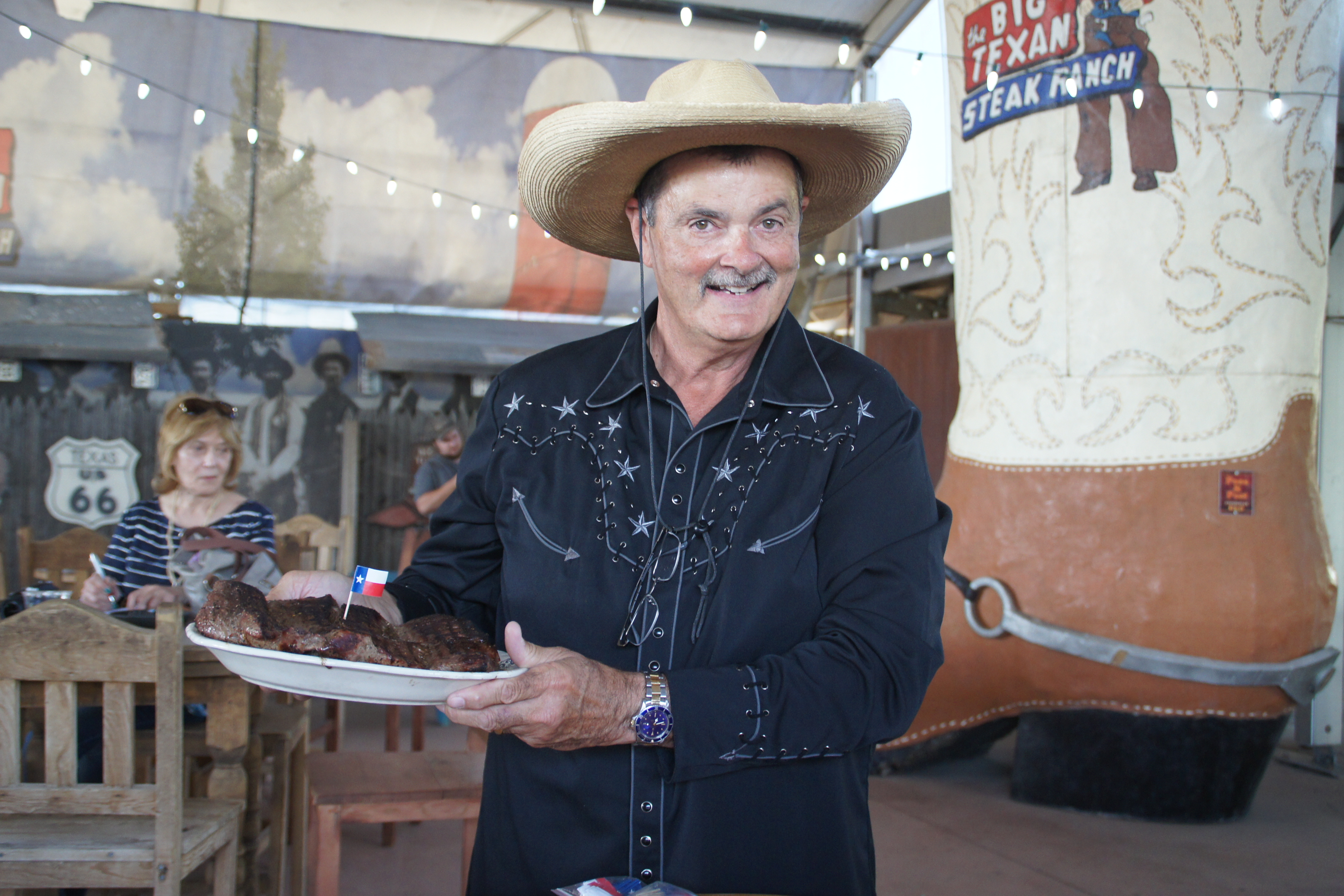If you’re a fan of western literature and movies, put Amarillo, Texas, and the surrounding Panhandle of northwest Texas on your travel “to do” list. The longhorn cattle you may see trotting down Polk Street, the rickety old windmills pumping water for cattle and the dry, rugged terrain makes you think Clint Eastwood will ride up on his horse any time and squint into the sunset.
But this is no movie, nor it this a place of where folks don western wear but have never seen a ranch. Instead, it’s easy to find a true taste of the American west here among real life cowboys and cowgirls whose roots and ranches go back to the mid-1800s and the first cattle drives.
Palo Duro Canyon


Head first to Palo Duro Canyon, this country’s second largest canyon, gouged into the flat, dry terrain not far from Amarillo. In Palo Duro Canyon State Park you’ll find great hiking and plenty of animals including bobcats, roadrunners and Texas horned lizards. Hikers may also come across the park’s resident longhorn cattle T-Bone, Brisket and Omelette (members of the state’s longhorn herd). Or, they might find a dugout shelter that early ranchers used despite the fact that this was the winter home of the Comanche. In 1874, the ultimate struggle between white settlers and the native Comanche played out in the brutal Battle of Palo Duro Canyon. The army destroyed the Comanches’ supplies, slaughtered their horses and eventually sent them to reservations in Oklahoma, a story told in S.C. Gwynne’s bestseller, Empire of the Summer Moon: Quanah Parker and the Rise and Fall of the Comanches, the Most Powerful Indian Tribe in American History.
Then in 1876, Charles Goodnight (the inspiration for the Woodrow Call character in Larry McMurtry’s classic novel, Lonesome Dove) opened the famous JA Ranch in the canyon. At its peak, the ranch supported more than 100,000 head of cattle on 1.5 million acres and remains a working ranch today. The park, originally part of that ranch, opened in 1934.
History Behind the Texas Tales


You’ll find more about Charles Goodnight and his wife Molly, one of history’s unsung western women, at the Charles Goodnight Historical Center on their ranch in what is now Goodnight, Texas. The buffalo still roam this ranch, saved from extinction by Molly Goodnight’s efforts. In addition to Lonesome Dove, history buffs will want to pick up a copy of J. Evetts Haley’s Goodnight biography Charles Goodnight: Cowman and Plainsman.
To gain a better understanding of the sweep of Panhandle history, point your wagon toward the fabulous Panhandle-Plains Historical Museum in the town of Canyon. It’s Texas’s oldest and largest history museum and lies on the campus of West Texas A&M University. Its vast collection includes dinosaur skeletons, pioneer life exhibits, memorabilia of the great Comanche Chief Quanah Parker, oil derricks, antique cars and western art including works by O’Keefe, who lived in the area for a time. Like guns? They have an immense collection.
Saddle Up

Still, Panhandle life must be experienced from the saddle. There’s no better way to do that than to ride with Cowgirls and Cowboys in the West at Los Cedros Ranch. Owner Phyllis Nickum and her crew welcome visitors from around the world to this working ranch on the edge of the canyon.
From atop her in her golden palomino, Jake, she explains the story of the vanquished. “This is the sacred home of the most powerful Indian tribe and greatest horsemen in American history, the Comanche. History books are written by the victors so I do my part to infuse the majesty of the tribe in the story.” She also calls attention to the strength and endurance of the women of western history—women like Molly Goodnight and Stagecoach Mary who are often overlooked in story of the west.
Back in Amarillo, you can see Nickum cheering on her ranch hands when they participate in a series of lively ranch rodeos that culminates with the World Championships in November. You’ll see bronc riding, wild cow milking, stray gathering, team penning and the mutton busting competition in which tiny kids cling on for a sheep ride. “Toughens ’em up,” says Nickum.
Amarillans take pride in another era of Panhandle history, the glory days of Route 66.

Amarillo, the largest Texas city on the route, commemorates its place on the “Mother Road” and maintains the Route 66 Historic District on Sixth Avenue. It features a mile of art galleries, shops, restaurants, and bars in historic buildings.The giant-bull-topped Big Texan Steak Ranch relocated from its original Route 66 home to its current sprawling spot on I-40 but retains every bit of its outsized personality. Keep an eye out for carnivores attempting to consume the 72 oz. steak. Eat it in one hour and your meal is free. Wash it down with a Whoop Your Donkey Double IPA and a side of mountain oysters.
There’s much that’s new in Amarillo, too, including breweries, a jazz club, cool coffee shops, and some trendy restaurants and hotels. A minor league baseball park with a Double-A Texas League team will open in time for the 2019 season. Finally, the new Dove’s Rest Resort offers cushy cabins on the edge of Palo Duro Canyon that make a great place to stay, relax and keep an eye out for Clint Eastwood.

